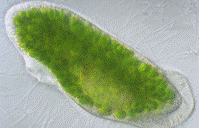Biological Sciences, School of

School of Biological Sciences: Faculty Publications
Document Type
Article
Date of this Version
2012
Citation
Eckberg, Tenhumberg & Louda in Ecology (2012). Copyright 2012, Ecological Society of America.
Abstract
A current challenge in ecology is to better understand the magnitude, variation, and interaction in the factors that limit the invasiveness of exotic species. We conducted a factorial experiment involving herbivore manipulation (insecticide-in-water vs. water-only control) and seven densities of introduced nonnative Cirsium vulgare (bull thistle) seed. The experiment was repeated with two seed cohorts at eight grassland sites uninvaded by C. vulgare in the central Great Plains, USA. Herbivory by native insects significantly reduced thistle seedling density, causing the largest reductions in density at the highest propagule inputs. The magnitude of this herbivore effect varied widely among sites and between cohort years. The combination of herbivory and lower propagule pressure increased the rate at which new C. vulgare populations failed to establish during the initial stages of invasion. This experiment demonstrates that the interaction between biotic resistance by native insects, propagule pressure, and spatiotemporal variation in their effects were crucial to the initial invasion by this Eurasian plant in the western tallgrass prairie.


Comments
Copyright 2012. Used by permission.